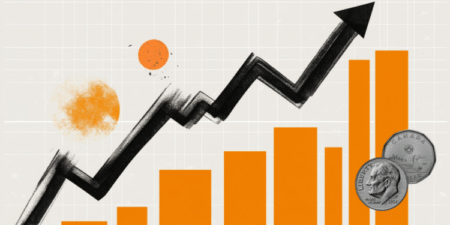- NZD/USD posts modest gains around 0.6030 in Thursday’s early Asian session.
- New Zealand’s economy grew faster than expected in Q1, supporting the Kiwi.
- The Fed kept its key borrowing rate targeted in a range between 4.25%-4.50% on Wednesday.
The NZD/USD pair trades with mild gains near 0.6030 during the early Asian session on Thursday. The New Zealand Dollar (NZD) strengthens against the Greenback due to the stronger-than-expected New Zealand’s Gross Domestic Product (GDP) report. US markets will be closed on Thursday for the Juneteenth holiday.
Data released by Statistics New Zealand on Thursday showed that the country’s GDP grew by 0.8% QoQ in the first quarter (Q1), compared with a 0.5% expansion (revised from 0.7%) in the fourth quarter. This reading came in above the market consensus of 0.7%.
Meanwhile, the first-quarter GDP contracted by 0.7% YoY, compared with a fall of 1.3% (revised from -1.1%) in Q4, stronger than the estimation of a 0.8% decline. The upbeat New Zealand data provides some support to the Kiwi against the US Dollar.
The Federal Reserve (Fed) on Wednesday decided to keep its interest rates steady amid expectations of higher inflation and lower economic growth. Fed officials continued to pencil in two rate reductions later this year. However, it expects one rate cut for both 2026 and 2027. During the press conference, Fed Chair Jerome Powell said that there is time to wait for more clarity before deciding on policy.
Reuters reported on Wednesday that the US military is also bolstering its presence in the Middle East, prompting speculation about US intervention that investors fear could widen the conflict in the region. Any signs of escalation in the Middle East could boost the safe-haven flows and benefit the Greenback.
New Zealand Dollar FAQs
The New Zealand Dollar (NZD), also known as the Kiwi, is a well-known traded currency among investors. Its value is broadly determined by the health of the New Zealand economy and the country’s central bank policy. Still, there are some unique particularities that also can make NZD move. The performance of the Chinese economy tends to move the Kiwi because China is New Zealand’s biggest trading partner. Bad news for the Chinese economy likely means less New Zealand exports to the country, hitting the economy and thus its currency. Another factor moving NZD is dairy prices as the dairy industry is New Zealand’s main export. High dairy prices boost export income, contributing positively to the economy and thus to the NZD.
The Reserve Bank of New Zealand (RBNZ) aims to achieve and maintain an inflation rate between 1% and 3% over the medium term, with a focus to keep it near the 2% mid-point. To this end, the bank sets an appropriate level of interest rates. When inflation is too high, the RBNZ will increase interest rates to cool the economy, but the move will also make bond yields higher, increasing investors’ appeal to invest in the country and thus boosting NZD. On the contrary, lower interest rates tend to weaken NZD. The so-called rate differential, or how rates in New Zealand are or are expected to be compared to the ones set by the US Federal Reserve, can also play a key role in moving the NZD/USD pair.
Macroeconomic data releases in New Zealand are key to assess the state of the economy and can impact the New Zealand Dollar’s (NZD) valuation. A strong economy, based on high economic growth, low unemployment and high confidence is good for NZD. High economic growth attracts foreign investment and may encourage the Reserve Bank of New Zealand to increase interest rates, if this economic strength comes together with elevated inflation. Conversely, if economic data is weak, NZD is likely to depreciate.
The New Zealand Dollar (NZD) tends to strengthen during risk-on periods, or when investors perceive that broader market risks are low and are optimistic about growth. This tends to lead to a more favorable outlook for commodities and so-called ‘commodity currencies’ such as the Kiwi. Conversely, NZD tends to weaken at times of market turbulence or economic uncertainty as investors tend to sell higher-risk assets and flee to the more-stable safe havens.
Read the full article here















